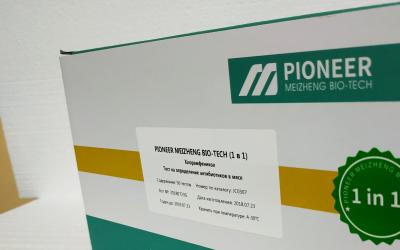Why "cheat" bacteria? Developments of the Institute of Bioorganic Chemistry of the National Academy of Sciences

This story began half a century ago, when Belarusian biologists and chemists became seriously interested in proteins.
- I came to the Institute in 1974, and since then we have been moving in this direction, - says Sergey Usanov, Corresponding Member of the National Academy of Sciences of the Republic of Belarus, Professor, DOCTOR of Chemical Sciences. - The progress is huge. If in 1990 they told me that I would manipulate the genomes of microorganisms and they would synthesize the proteins I needed, I would not have believed it.Sergey Alexandrovich - the HEAD of the scientific school, who headed the Laboratory of Protein Chemistry (now the Laboratory of Protein Engineering) from the very moment of its creation, in 2011-2016 - the DIRECTOR of the Institute of Bioorganic Chemistry , who did a lot to turn it into the temple of science that we are we see it today.
After Sergei Usanov resigned from his administrative duties, the institute and laboratory of protein engineering, where genes are synthesized, is headed by his former graduate student, and now a candidate of chemical sciences, associate professor Alexei Yantsevich. He does not at all consider that it is his laboratory that is the heart of the institute:
- We have twelve hearts, and they all beat vigorously. Historically, each laboratory has its own direction, and each works fruitfully in its own direction. Moreover, what is important at the present time, not in isolation from the needs of the country, but precisely in order for the economy to work, products to be produced, so that the needs of enterprises and organizations are met by our forces.
Nanograms of a synthetic gene cost thousands of dollarsThe Protein Engineering Laboratory was originally created for the production of proteins. Some of the products are also produced here.
- It often happens that the development seems to be in demand by the economy and the country, but it is quite difficult to implement it at the plant, - explains Alexey Yantsevich. - If only because the volumes are not so large as to build an enterprise for them.
Aleksey Viktorovich jokingly calls his own production microtonnage, but the cost of what is produced - in the literal and figurative sense - is such that you remember Mayakovsky with his notorious "radium mining".
"We have twelve hearts, and they all beat vigorously."“To buy a few nanograms of a synthetic gene - a tiny speck of dust that is not visible to the naked eye - you need to pay several thousand dollars,” he smiles.
The building of the institute, designed by architects M.K. Vinogradov, G.B. Geravker and B.3. Popov, was built in 1978-1981 with the expectation of solving large and important scientific problemsA nanogram is a billionth of a gram, and it is not mined "in a year", like a poet, but in a matter of days.
Where do the roots of this idea come from?
- Proteins form the basis of the human body, but in Belarus no one has dealt with them before us, - says Sergei Usanov.
The task at first was to elucidate the structure and function of proteins, on the basis of which complex organic compounds are created in the body. For example, steroid hormones. This was sorted out at the institute. Moreover, even in Soviet times, they learned how to isolate the necessary substances from natural tissues and proved that they really work in the synthesis of hormones.
But this was only the first step towards the creation of new drugs and, as it turned out, to the synthesis of the gene.
- Somewhere in 1986, I left for America to master the methods of obtaining recombinant proteins, - continues Sergey Alexandrovich, - that is, an exact copy of those that are present in the human body, but obtained from bacteria.
At that time, no one thought about gene synthesis, although the name of the American-Indian scientist Hara Gobind Korana was already thundering in world science.
“Using the labor of about a hundred employees and spending hundreds of millions of dollars, he synthesized the gene that encoded the bull's rhodopsin,” explains Usanov.
At that time it seemed implausible, but powerfully spurred the development of science.
“We have learned to transfer a gene into a bacterium and, roughly speaking, to deceive it, forcing it to synthesize a protein that is not characteristic of it,” the scientist continues. - At this stage, it was possible to manipulate genes very well and integrate them into various microorganisms. We are a whole group of scientists, of which only a few have returned to their homeland.
Why did Usanov return? I asked him and he frankly answered:
- My father is an officer of the Soviet army. I wanted to do something useful for the Republic of Belarus.
"Deceived" bacterium works diligentlyThe return of the scientist in 2001 coincided with the beginning of an era when, through the efforts of the state, Belarusian science began to resurrect after the blow dealt to it by perestroika.
- In 1974, the institute was created according to all the standards of world science, - says Alexey Yantsevich. - He demonstrated the highest level not only in terms of equipment, but also in terms of planning and infrastructure, which fully satisfied all the needs of scientists.
With the head of the scientific school Sergey Usanov, his students consult on all issuesThe scrapping of the country hacked off our science on the rise, but by the beginning of the 2000s, it began to spread its wings again. The ultra-modern technologies that Usanov brought with him turned out to be very useful here.
“DNA polymerase was cloned in America, and I brought it here, to Belarus,” he admits.
DNA polymerase is an enzyme necessary for the synthesis of genes; even the Koran worked with it. It is also involved in the polymerase chain reaction (PCR), which everyone has heard about thanks to tests for covid.
In the old days, this essential substance for geneticists and biologists was extracted from extremophilic organisms - bacteria that live in hot geysers at a temperature of 80 degrees Celsius.
Then another era came when a gene extracted from an extremophilic bacterium was learned to be introduced, for example, into E. coli, so that it would produce the protein we need.
How it's done? Not with a needle and not under an electron microscope. For the purposes of synthetic biology, such tools are too crude. The insertion is done using plasmids - small DNA molecules that are physically separated from the chromosomes and are able to reproduce on their own.
- We produce them in solutions and freeze them at the temperature of liquid nitrogen, - Sergey Usanov explains. - When they are needed, we introduce them into a bacterium, and it multiplies them in huge numbers. After that, we cut the plasmid, insert the desired gene, ligate it and insert it into the bacterium.
Fantasy, isn't it?
And then the "deceived" bacterium diligently works, producing enzymes for scientific purposes, for the diagnosis and treatment of diseases, enzymes for the food industry, and much more that the country needs.
For example, somatotropin is a growth hormone that is vital in many disorders in the development of the body. Just half a century ago, midgets were perceived as commonplace. Now, thanks to somatotropin, there are no more than 800 of them on the entire planet.
Or glucose oxidase, which is part of the test strips for the glucometer. Or monoclonal antibodies - an extremely promising direction in the treatment of cancer.
- Previously, genes were always extracted from those organisms in which they are present, - Alexey Yantsevich specifies. - This technique began to develop in the 1980s and still works great.
Young director Alexey Yantsevich"We have learned how to transfer a gene into a bacterium and, roughly speaking, deceive it."And if the required organism has long died out or lives at the bottom of the Mariana Trench? If this is the most dangerous pathogenic bacterium, which is strictly forbidden to be kept in laboratories? Or is it just that for some reason the desired object is not available now?
This is exactly what happened, according to Yantsevich, in 2016 or 2017, when our scientists urgently needed to produce the cholesterol oxidase enzyme. It oxidizes cholesterol and is used in rapid medical tests. Moreover, by its mere presence inside a conditionally pathogenic bacterium, it turns a harmless microorganism into a dangerous enemy, and for drug developers at that moment it was important to understand what chemical could block it.
- In a word, a very important protein, - Alexey Yantsevich continues his story. “But we did not have an organism at hand from which we could remove the gene necessary for its production.
Synthesis accelerated 32 timesThere is only one way out - to synthesize.
Of course, it was possible to import from America in a roundabout way, as most did, but what a lot of money and problems! Yes, and tired of depending on external circumstances.
- Then it seemed that we would make a gene in a jiffy, - Yantsevich smiles.
Where there! I had to plow pretty hard, and without the support from the state, nothing would have happened anyway. According to Alexei Viktorovich, it was the notorious ax porridge.
“We only had a very, very old oligonucleotide synthesizer from 1983,” he chuckles.
This is a device that creates pieces that are then glued together into a complete synthetic gene. Science has not yet learned how to rivet a double-stranded giant from 1500 to 2500 base pairs in one fell swoop, so the process starts small.
- From the sequence that the customer sends us or that we come up with ourselves, - my guide to the laboratory, researcher Veronika Shchur, enlightens me. - This is a sequence of letters A, T, G, C, formatted as a text file.
Four letters - four types of nucleotides, building blocks from which a gene is created. It sounds simple, but it took years of efforts by world and domestic science to decipher their sequence in each gene responsible for the production of a particular protein.
This is how bacterial colonies look like with different variants of the synthetic gene assemblyA special computer program analyzes a given sequence of letters and breaks it into oligonucleides - the very chains that will be created in the synthesizer. This is called "assembly design".
"Then it seemed we would make the gene in no time."Depending on the length of the gene, there may be a different number of pieces, but certainly several dozen. And the "old man" born in 1983, even after he was repaired and properly tuned, synthesized only one oligonucleotide in one sitting, so that the whole process stretched not even for weeks - for months.
Read also:
What to do? We turned to the leadership of the Academy of Sciences, which was sympathetic and purchased a modern oligosynthesizer for the laboratory of protein engineering. Synthesis accelerated 32 times.
“Of course, it was a great joy,” recalls Aleksey Yantsevich. - We no longer had to think hard how to synthesize such a large number of pieces. Just some half a day - and we immediately have 32 oligonucleotides. Thanks to the Academy, thanks to the state!
Veronica Shchur showed how the sacrament of conception of pieces takes place. How tiny balls are placed inside the columns, to which growing chains are attached, how letter after letter is added - each column has its own sequence, and it must be strictly observed.
Further cleaning, with which at first there were also many problems:
- Do I need to clean each piece separately, or can I do it all together? - Alexey Viktorovich asks a question and answers it himself: - We have come to the conclusion that it is possible to do a joint cleaning of all the pieces for one gene.
Then it is necessary to separate the "lambs" from the "goats". Go through the hundreds of thousands of chains formed, throwing out too short and too long. To do this, scientists have their own tricks.
This is what a double strand of DNA looks like. Colored balls are atomsAnd then the most interesting and crucial moment: with the help of a special enzyme, the pieces are combined into a double-stranded gene. And again cleaning and checking, separation of by-products. Although, in principle, from the resulting synthons (pieces) you can create a whole library and select from them the one that works best. And this is also the direction of work.
- Evolution has been going on for millions of years, but we could organize it in a test tube, - Alexey Yantsevich smiles.
All efforts are to cut off genes with errorsIn the meantime, all efforts are aimed at cutting off genes with errors or, if you like, with mutations.
- God forbid, some kind of failure will happen in the synthesized gene, - the scientist continues. - Then the bacterium in which it is embedded will not be able to produce the desired protein.
And even if he can, it's a blow to his reputation. In the current conditions, rechecking the gene for the customer is not such a difficult task. Another thing is to correct errors in the genes. This is a complex process that requires genuine virtuosity and scientific fanaticism. And here Veronica Shchur is hope and support, although she is new to science.
Most of the institute's employees came to science according to the same scenario: an intelligent school teacher, victories at the olympiads, admission to the university (virtually without exams), third-year practice in the laboratory of genetic engineering ... And the young man is already ready to devote his life to this.
Alexey Yantsevich admits that after school he hesitated in choosing: biology, chemistry or medicine. Chose Biology...
- We have about 50 synthesized genes in our piggy bank, - Alexey proudly declares. - We have protected our method with a patent and publications in reputable journals, including American ones.
What's next? What are the prospects? What is the life of this idea, besides the fact that the genes developed in the laboratory of protein engineering are already working today and creating a product necessary for the economy and medicine?
"Evolution took millions of years, and we could organize it in a test tube."“Altimed Techno, which creates innovative biotechnological products, is among our customers,” Yantsevich specifies. - We have not yet entered the foreign market, although there is such a possibility.
In the oligonucleotide synthesizer, the magic of the synthesis of pieces of the future gene takes place
For this, the director believes, it is necessary to increase the scale. And the laboratory is expanding: several rooms adjacent to it are being actively renovated.
- In addition, from our genes we get proteins - natural and their analogues. Or, for example, chimeric proteins, when a piece is taken from one protein, a piece from the second, and as a result their functions are combined, says Veronika Shchur.
One of the first enzymes that was produced in the lab with a hand-synthesized gene is DNA polymerase, which is essential for all these miracles.
“It's one thing to produce genes for others to work with,” Yantsevich emphasizes. - But we must realize our potential by working with genes that we have synthesized ourselves.
"These girls are turning into guinea pigs"The most obvious use of the synthetic gene is in the treatment of hereditary diseases.
- Synthesis is needed to replace a malfunctioning gene in the body of a child or an adult and cure him of this disease, - Sergey Usanov explains, but immediately makes a reservation: - This is not the task of today. This is a perspective for the future.
Nevertheless, such technologies are already being sold for big money . But at what cost?
Their discoverer, He Jiankui, spent three years in a Chinese prison just for implanting a genome-edited embryo into the uterus for the first time in the world. His goal was to prevent the conceived girls from becoming infected with HIV because their father was infected. The twins Lulu and Nana were safely born on November 26, 2018, and at the same time He Jiankui announced the success of his experiment, although it would be possible to put an end to it in seventy years. The scientist himself openly stated in a journal interview that he did not know what other functions in the body the gene he had edited was responsible for.
The yellow press immediately dubbed him the creator of genetically modified children.
“They condemned He Jiankui, first of all, because he is doing something that we don’t know yet,” commented Valeria Sokolchik, Ph.D. - And what will be the effect, we also do not know. Even if all the requirements of informed consent are met, these girls turn into experimental creatures that are interesting from the point of view of medical science, but they are unlikely to have a normal human life.
In particular, the expert wonders if these girls can give birth:
- Will their children be born with an already corrected genome and will they carry these changes further? Forbid them to give birth or place them in a laboratory and keep them under control for the rest of their lives? But then their offspring should also become laboratory inhabitants?
Questions to which humanity does not yet know the answer.
- And now He Jiankui has taken up spinal muscular atrophy, - continues Valeria Sokolchik, - and the world reacted to his undertakings very, very wary. People suffering from such a serious disease will agree to anything for the sake of an illusory hope. Ultimately, it is the decision of the individual. But is it acceptable from the point of view of society? Will it not turn out that as a result of experimental treatment people will die or acquire an additional defect?
Valeria Sokolchik is convinced that everything is possible in experiments on bacteria. But as soon as animals and especially people are involved in them, it is necessary to measure seven times and cut once.
What projects are you working on right now?A popular direction, which is also of interest to our scientists, is the creation of DNA vaccines, under the influence of which the human body produces a pathogen protein and trains an immune response, including to cancer cells. But synthetic gene chains that could produce precious medicinal alkaloids are a task for the future, Aleksey Yantsevich believes.
The same taxol is the most important drug for the treatment of malignant tumors. It is extracted from the bark of the Pacific yew, which grows on the west coast of the United States and CANADA. Attempts at chemical synthesis have not yet been crowned with any significant result. Hence the exorbitant price.
- And here it would be produced by a yeast cell, which divides every 20 minutes, - Alexei Yantsevich dreams. - Added SUGAR - and got as much taxol or some other similar drug as you need. Fast and, most importantly, controllable, and there is no need to use fields, agricultural preparations and everything else for this.
And, finally, a project that the protein engineering laboratory is already working on.
- The idea lies precisely in the creation of the first gene therapy products in Belarus, - says Aleksey Yantsevich. - They took such a complex disease as ischemia of the lower extremities. As a result of atherosclerosis, it usually leads to amputation. The task of therapy is to create new blood vessels through which blood carrying oxygen will move.
Special proteins are responsible for the creation of new blood vessels in the body. This is, firstly, angiogenin, which, in particular, creates a vascular network in the tissues of the embryo and, getting into the child's body with mother's MILK, stimulates the development and growth of the circulatory system. And secondly, vascular endothelial growth factor, produced by the cells of their inner surface.
Both substances are very difficult to obtain by traditional methods. Thus, the discoverer of angiogenin Bert Valley, in order to obtain one milligram of this protein, processed 2000 liters of a human malignant tumor culture, which entered the annals of world science.
Modern genetic technologies are very welcome here. Moreover, both enzymes must not only be obtained, but also tamed in order for them to work in the direction necessary for science.
- We took these proteins into development, synthesized the genes encoding them and create plasmid constructs that will contain these genes, - Alexey Yantsevich continues.
The work was supported by the leadership of the National Academy of Sciences of the Republic of Belarus and is being carried out in cooperation with the Department of Medical Sciences.
- Research is still at the initial stage, - says Vasily Genrikhovich Bogdan, Academician-Secretary of the Department, Doctor of Medical Sciences, Professor, Colonel of the Medical Service. - But by the end of the year, as a last resort, by the beginning of the next we will deploy them on a full scale.
"We must realize our potential by working with genes that we have synthesized ourselves."It is in the line of such medical developments that the further progress of genetic engineering in our country is seen. Despite the rapid development of science, there is an unplowed field of problems that have not yet been solved, behind which is the pain and suffering of people.
- You work along the rails until you encounter a problem, and it leads to new horizons. The main thing is not to bypass the difficulties, but to try to overcome them, because each of the problems is a new task, it is a movement forward, - Alexey Yantsevich shares.
He is an optimist and is convinced that if you work, the result will inevitably be, luck only speeds up the process. In six years of work towards gene synthesis, impressive progress has been made, but more remains to be done.
| Yulia ANDREEVA, magazine.
| Photo by Tatyana Matusevich and from the archive of the Institute of Bioorganic Chemistry.
The project was created at the expense of targeted collection for the production of national content.
REPRINTING OF THIS MATERIAL (IN WHOLE OR IN PART) OR OTHER USE OF THIS MATERIAL IS PROHIBITED
Read together with it:
- Maduro has given himself new powers in the event of war with the United States.As the Venezuelan Vice President clarified, the decree will come into force in the event of external aggression, which could be based on US military intervention. Venezuelan President Nicolás Maduro signed a decree granting him additional security powers in the event of a military invasion of the country, Venezuelan Vice President Delcy Rodríguez announced, Finanzas Digital reports. She announced ...





























































